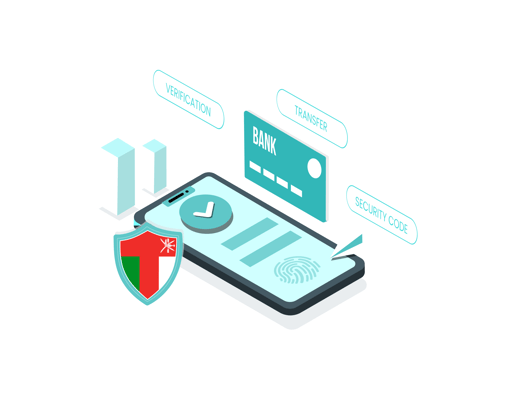Several times, people consider eNACH and eMandates as the same. While these terms are often used interchangeably, they’re not entirely the same. Didn’t know that? Want to know what these terms mean and how they’re different? Well, we got you covered.
This blog discusses what eNACH and eMandates are, their advantages, and how they’re different. So, read in full.
What are eMandates?
eMandates are the electronic version of physical or paper-based mandates. They’re a standing instruction wherein the customer allows the bank to debit their account and transfer the money to another bank account on a specific date. Customers get the option to edit, register or entirely delete the mandate online and almost instantly.
Mandates are usually offered in 3 different ways:
- Physical mandate: In this case, the customer needs to fill out a physical form, and the entire process is manual and highly time-consuming.
- eSign Mandate: eSign mandate was legitimized recently by the NCPI. In this type, the mandates are authorized using an Aadhaar e signature. The eSign-based mandate was launched for all banks on June 1, 2020, to make the process fast and more efficient.
- API Mandate: When the mandate is initiated electronically through the web, and the customer credentials are verified digitally, it’s called an API-based mandate. Here the customer can authenticate using:
a) Net banking
b) Credit/Debit Card
Types of E-Mandates
eMandates are of two types:
- Debit Mandate: As the name tells, a debit mandate is meant to debit money from a person’s account each month for different purposes. Let’s say a person needs to pay a monthly instalment for SIP; in that case, they’ll set up a debit mandate.
- Credit Mandate: Setting up a credit mandate will ensure that you get the payments credited to your account on time without delay. This is an amazing advantage for businesses as they can get timely payments without frequently reminding their customers.
What are eNACH Mandates?
eNACH stands for National Automated Clearing House and is a web-based solution helping banks, financial institutions, corporates, NBFCs, and the government to facilitate repetitive high-volume transactions.
The NACH is a centralized system consolidating different ECS systems across the country (including hundreds of banks) to provide a framework free from local inhibitors or barriers.
Customers can digitally sign the eNACH for debit or credit mandate and generate a UMRN or Unique Mandate Registration Number. Once the UMRN is generated, the eNACH acts as the permission granted by the customer to periodically debit a mutually agreed-upon amount.
Must Read - Voluntary vs. Involuntary Churn
Advantages of having eNACH and E-mandates
1. Improves your Customer Retention
Customers are too lazy to make payments on time, especially when they’re recurring. And sending them continuous reminders is quite off-putting, and you might even lose your customer. So, how do you ensure regular payments and uninterrupted customer service? eMandate is your answer.
A one-time authentication using eMandate allows you to legally auto-debit the customers’ bank account on a set date. This will ensure a seamless service experience and better customer retention.
2. Ensures Frictionless Payments
In today’s era, customers need not visit the bank or fill out a physical form to pay their electricity bill, loan EMI, insurance premium, etc. They can simply make online payments using their mobile or laptop. While the process is quite convenient, it isn’t entirely seamless. After all, there are a lot of steps involved, such as:
- Visiting the website/app
- Logging in
- Filling in the receiver’s details
- Selecting the payment method
- Entering OTP
- And finally, making the payment
And all these steps could be a real hassle for the customers. However, you can cut all of the steps mentioned above using eMandate.
With eMandate, your customers need to set up the system just once. And the payment will be deducted from the customer’s account on the mutually decided date periodically. This way, you can ensure frictionless payments and, thus, a better customer experience.
3. Helps Cut Administrative Costs
In the typical scenario, organizations must send frequent intimations and invoices to the customers to follow up on the payments. And this increases the operational effort, which translates to more administrative costs for the organization.
However, eMandate helps cut that down. Because the payments are auto-debited, your employees don’t have to continuously notify the customers about the payments. This cuts down the operational efforts and, thus, administrative costs.
4. Auto-Reconciliation
Using eMandate, most details about the payments made are recorded online. This makes reconciling easy as your financial data is aligned with your bank and speeds up the overall accounting process. Therefore, you need not purchase separate tools to record the payments.
5. A Convenient Process
Enabling eMandate is a pretty simple process. The customer needs an active bank account number, an Aadhaar number, and a mobile number (registered with the bank and UIDAI.) Once the enrollment is done, customers can experience a lifetime of hassle-free service.
6. More Flexibility
Using a paper-based mandate was a tedious and time-consuming process, especially when the customers had to change their payment frequency. However, that’s something your customers won’t have to face with eMandate.
With eMandate, the business (you) has the authority to change or modify the payment, which can be done conveniently and almost instantly should the need arise. This helps ensure a good relationship between the business and the customer.
How are eNACH and eMandates Different?
Because there's only a marginal difference between eNACH and eMandate, most individuals use these terms interchangeably. Here's how they're different:
NPCI is the one that governs eNACH, which covers over forty banks, whereas eMandate is controlled by individual banks covering around four banks.
eNACH is a framework that includes a network of Electronic Clearing Services, and banks are the ones that let businesses process recurring payments seamlessly as it is used across different horizons of the country.
The eMandate process requires customers to authorize a one-time net banking transaction, after which all subsequent payments do not require the customer's participation. As of now, e-Mandates can be paid through net banking, with more payment modes to come.
This automation service helps customers pay monthly SIPs or insurance premiums without missing any payments.
Wrapping Up
eNACH and eMandates are perhaps the best methods for businesses to periodically collect payments from their customers. You can get the payments on time every time without having to notify your customers continuously.
.png?width=123&height=71&name=inai%20logo%20-%20dark%201(1).png)



.png?height=400&name=Header%20-%20What%20Are%20the%20Different%20Challenges%20and%20Issues%20With%20Cross-Border%20Payment_%20(1).png)

.png?height=400&name=Header%20-%20Hosted%20Payment%20Page%20(HPP).png)
